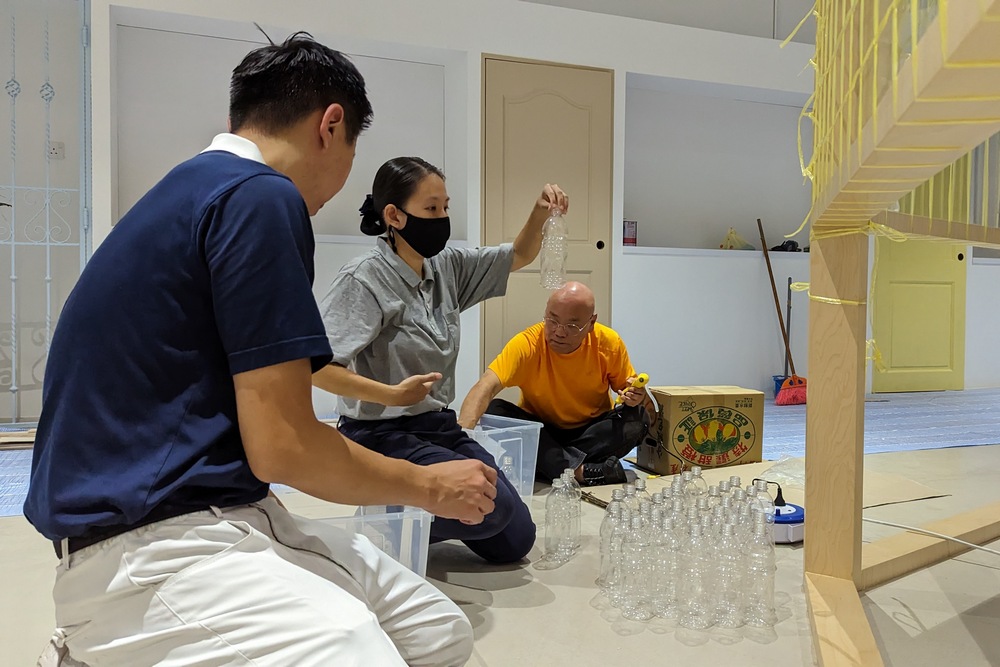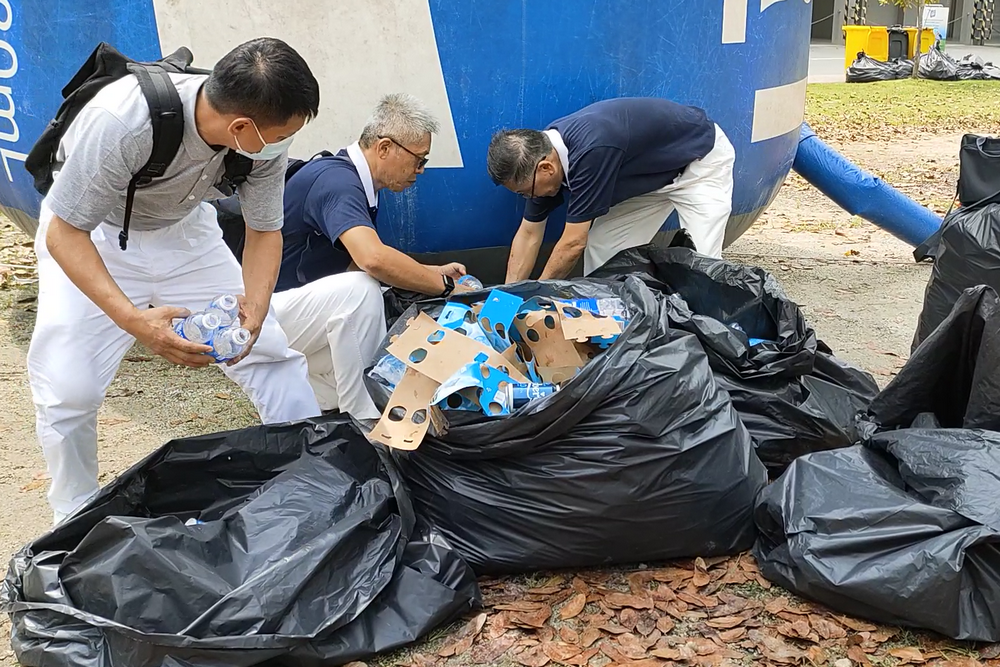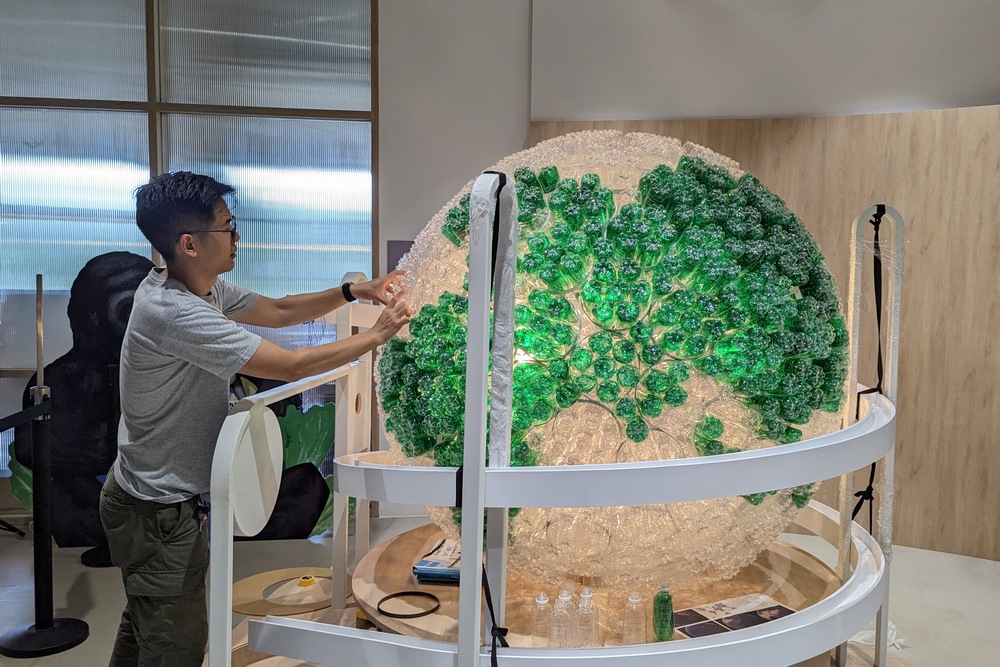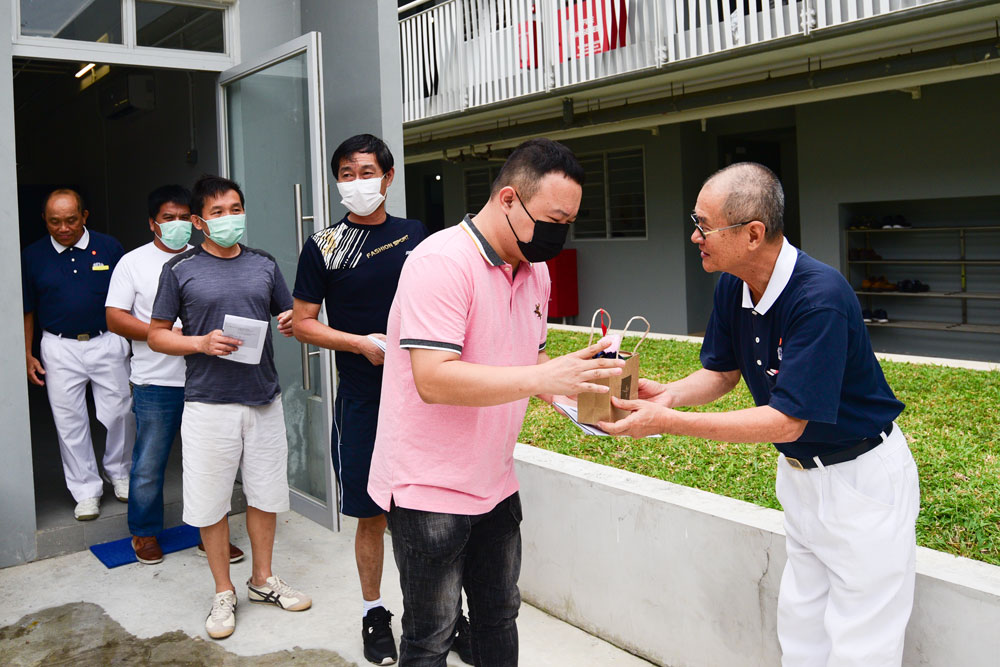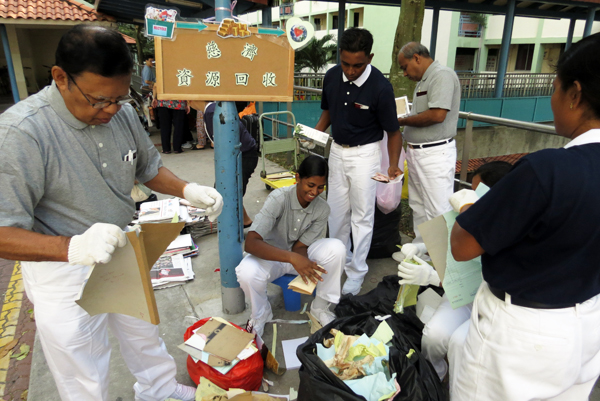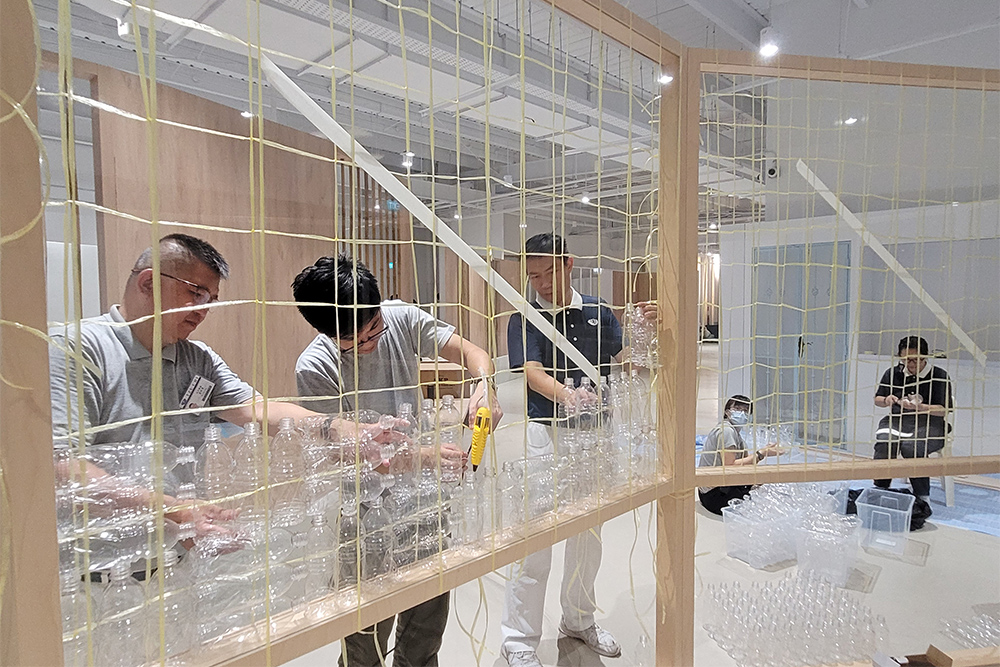 Many different parties came together to contribute towards a sustainable living gallery that aims to strike a chord with the community, especially the youth. (Photo by Pan Zaixiang)
Many different parties came together to contribute towards a sustainable living gallery that aims to strike a chord with the community, especially the youth. (Photo by Pan Zaixiang)
The closure of two iconic establishments, Tzu Chi Eco-Awareness Centre and Da Ai Gallery, in 2021 was widely viewed as the end of a significant phase in the Foundation’s journey to reach out to the masses. The two establishments offered engaging and immersive experiences for the old and young, educating many who walked through its doors.
And after close to 2 years, a brand-new and improved sustainable living gallery is set to open, combining the roles of these two past establishments. Named “Glow On Gallery”, it is set to become a permanent fixture at Tzu Chi Humanistic Youth Centre (HYC) from 30 July 2023 onwards. With the gallery’s concept and design revolving around the firefly species, “Glow On” would mean continuing to shine brightly like fireflies in the face of future challenges.
Tzu Chi founder Master Cheng Yen’s wish is for each individual to behave akin to fireflies, where they would illuminate the world when gathered together. Additionally, fireflies are seen as ecological indicators for the health of our ecosystem, given their extinction vulnerability due to worsening environmental conditions.
For the new gallery, the focus will not only be on environmental sustainability but also the social and economic aspects as well. Through two pathways - personal and collective, it hopes to help visitors understand how they can take action right from the comforts of their home environment, creating both personal and collective impact. While the gallery will be open to all members of the public, its design and content are curated with the youth as its primary target audience. As such, having fewer words, more interactive mechanical installations and bilingual content were all key considerations during the conceptualisation phase.
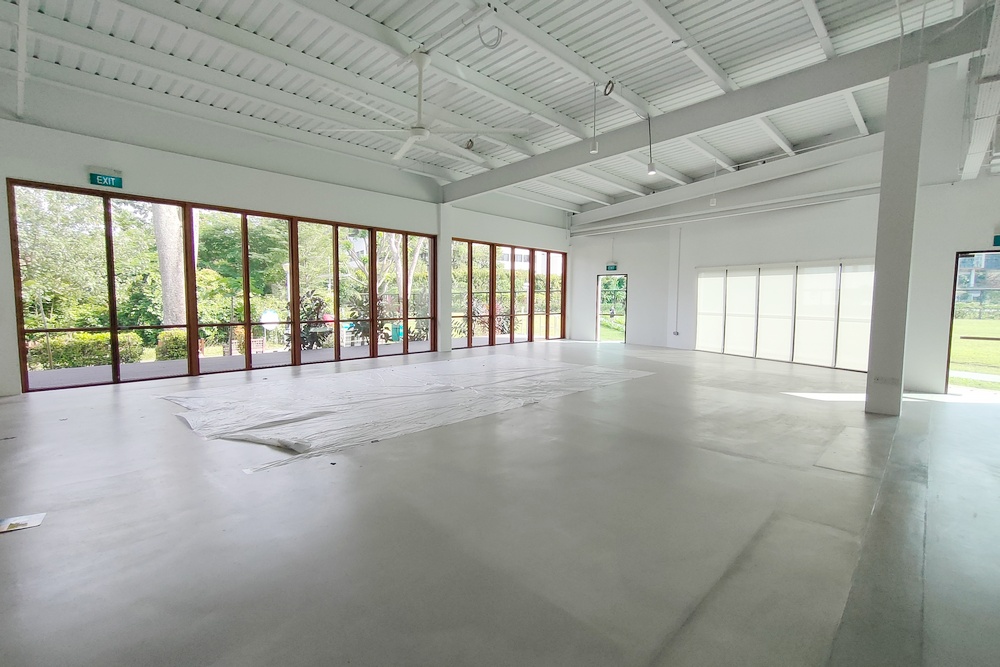 The space at HYC designated for the gallery before any work kicked off. (Photo by Bernard Ng Jia Han)
The space at HYC designated for the gallery before any work kicked off. (Photo by Bernard Ng Jia Han)
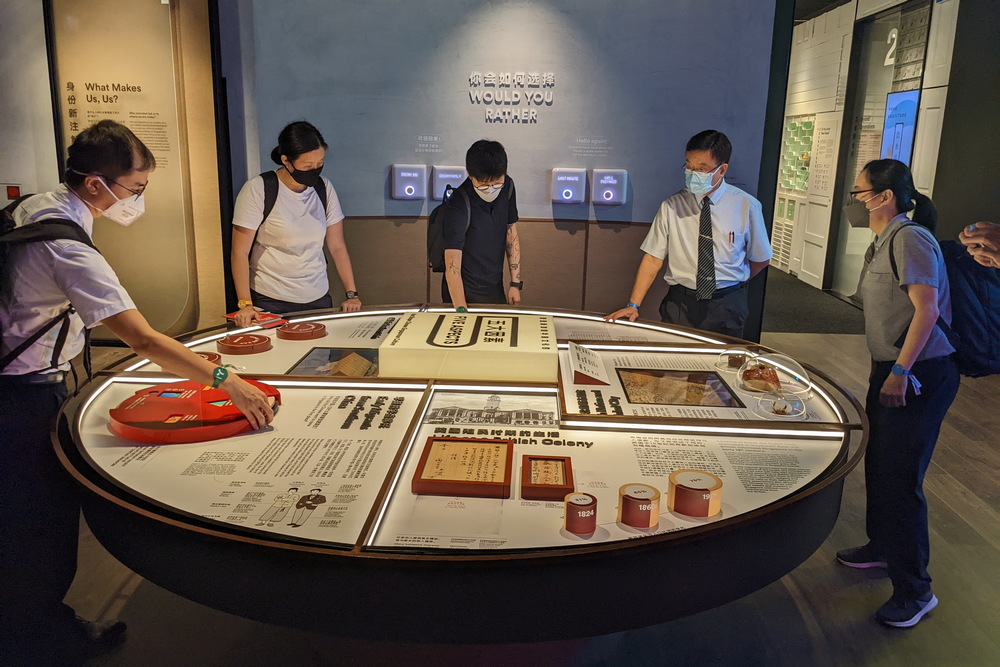 Tzu-Chi Foundation (Singapore) CEO Low Swee Seh (second from right), along with other staff, visited various galleries across Singapore as part of preliminary research work. (Photo by Tang Zou Cie)
Tzu-Chi Foundation (Singapore) CEO Low Swee Seh (second from right), along with other staff, visited various galleries across Singapore as part of preliminary research work. (Photo by Tang Zou Cie)
Overcoming Challenges Together
To help turn the ideas into reality, many different parties were involved, including Tzu Chi staff and volunteers, external design agency The Merry Men Works (TMMW) and members from the wider community. While the vision was to create a gallery that resonated with the masses, the path towards achieving this was not all that smooth sailing, with several obstacles arising along the way.
One main challenge was the balancing act between design and the gallery’s aim to maintain a low carbon footprint during the production process. While the ideal final product would incorporate both elements to their fullest, it might not always be the easiest to accomplish.
“If we want to lower the carbon footprint, there will be some challenges in terms of design. When planning, we have to research about how to maximise the resources used, yet ensuring that the concept is safe and beautiful,” shared TMMW creative lead, Ivan Yak.
“To incorporate recyclables or second-hand products, there will be more uncertainty as we will have to find these resources and evaluate how we can use or improve upon them. The preparation time will be lengthened as there will be more steps in the whole process.”
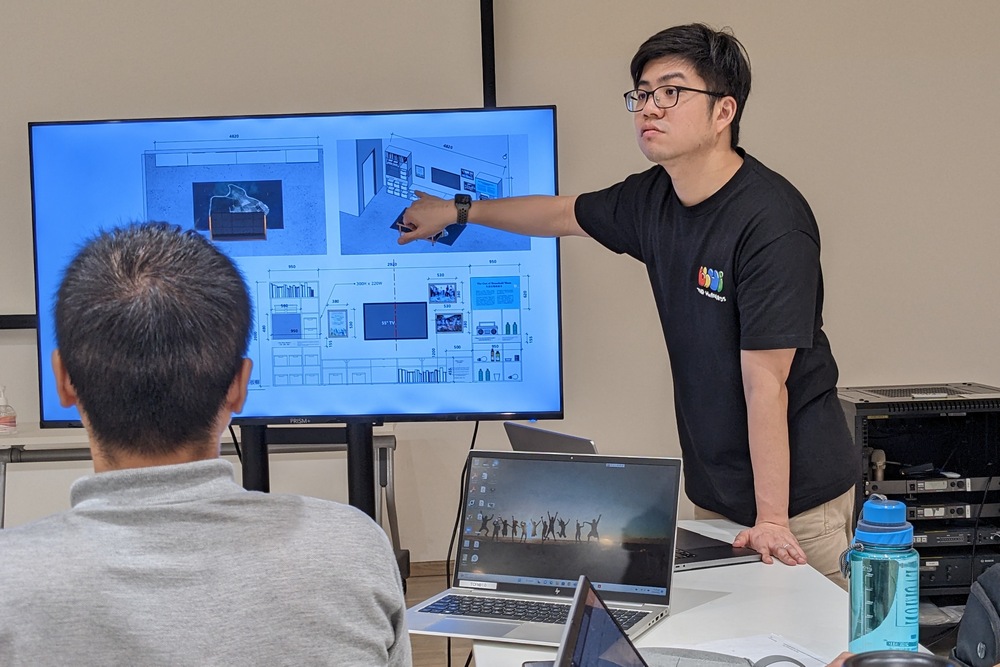 TMMW creative lead, Ivan Yak (right) giving a briefing about the gallery’s layout. (Photo by Tang Zou Cie)
TMMW creative lead, Ivan Yak (right) giving a briefing about the gallery’s layout. (Photo by Tang Zou Cie)
Despite these obvious struggles, the Tzu Chi team remained determined to stay the course and stick to its principles throughout.
Explained Tzu Chi’s environmental sustainability manager, Susan Tan: “Tzu Chi’s teachings emphasise sustainability at source. When teaching external parties about this concept through the gallery, we must follow this principle no matter how tough.
“By abiding by sustainability at source when using resources for the gallery, we are undertaking real actions to convince the public that it can be done. We are showing them that Tzu Chi has done it despite the challenges, so you can do the same as well.”
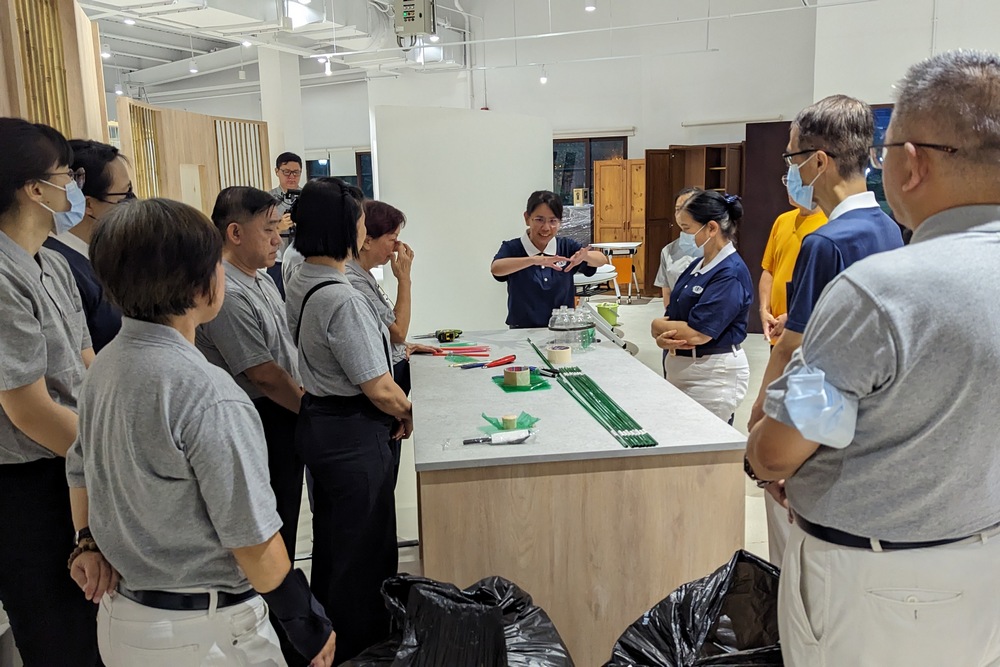 Environmental sustainability manager, Susan Tan (centre) briefing volunteers before they start helping with gallery preparation work for the night. (Photo by Tey Inn Ping)
Environmental sustainability manager, Susan Tan (centre) briefing volunteers before they start helping with gallery preparation work for the night. (Photo by Tey Inn Ping)
With an aim to achieve a lowered carbon footprint, the team opted for the unconventional choice of doing without air-conditioning for the gallery. To maintain cool temperatures, special attention was paid towards designing a space that supported optimal airflow. Additionally, an emphasis was placed on sourcing suitable recyclables or second-hand items that could be incorporated into the gallery. These items included a few hundred pieces of pre-loved clothes, a few hundred used plastic bottles and other second-hand items such as doors, bathtubs and cupboards.
Given the sheer quantity and quality of resources required, help had to come from various sources, including the wider community. For instance, the pre-loved clothes for the gallery’s fast fashion installation were donated by Cloop, a circular fashion enterprise focused on reducing fashion overconsumption and waste. Even though they had never previously donated to any organisations for an educational gallery, they had no qualms about doing so when the call came from Tzu Chi.
“I’m very excited to see what our clothes will become, like how they will be utilised and displayed. If we were to pass these clothes on, they would go to our recycler, or we might take some time to repurpose them. But because we get so many donations, we cannot deal with all of them ourselves,” said Cloop co-founder, Tan Yin Ling.
 Cloop co-founder, Tan Yin Ling (right) is seen here discussing with Tzu Chi and TMMW staff regarding the choice of pre-loved clothes for the gallery. (Screenshot by Chua Poh Ling)
Cloop co-founder, Tan Yin Ling (right) is seen here discussing with Tzu Chi and TMMW staff regarding the choice of pre-loved clothes for the gallery. (Screenshot by Chua Poh Ling)
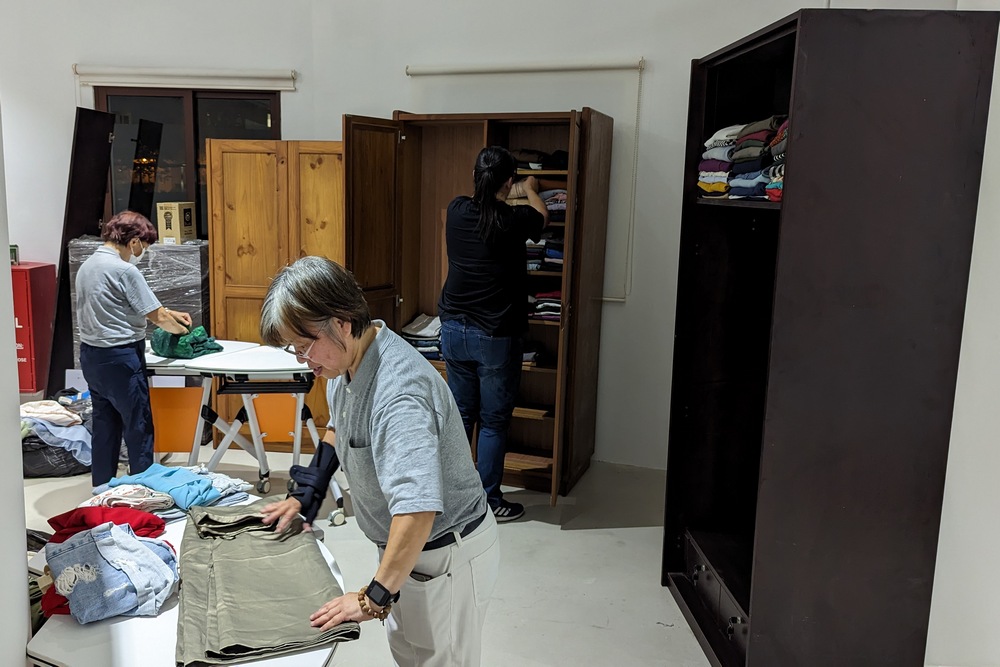 Pre-loved clothes were folded and prepared for the fast fashion installation in the gallery. (Photo by Tey Inn Ping)
Pre-loved clothes were folded and prepared for the fast fashion installation in the gallery. (Photo by Tey Inn Ping)
Besides the pre-loved clothes, used plastic bottles were another key resource in the gallery’s installations. Given how prevalent plastic bottles are today, one might feel that obtaining them would not be too difficult. However, the plastic bottles required for the gallery needed to be uncontaminated and of the same model. This was undoubtedly the main challenge.
Resourcefulness of Staff and Volunteers
Just when the team seemed to hit a roadblock, the resourcefulness of Tzu Chi staff and volunteers came to the forefront once again. Thinking out of the box, they managed to link up with a marathon organiser who was able to provide the quantity required after the conclusion of a recent marathon. Tzu Chi volunteers were then mobilised to collect, select and wash the bottles.
The role of Tzu Chi volunteers in ensuring the gallery’s success has indeed been integral. On various occasions, these volunteers took time off their busy schedules to come together to prepare these plastic bottles for the gallery’s use as well as other menial chores such as folding and stacking the pre-loved clothes.
Volunteer Low Yanti was one of those actively involved in preparing the plastic bottles. She had specially taken time off her busy schedule to come forward several times to lend her helping hand alongside more than 10 other volunteers. Judging by how meticulously volunteers such as Ms Low were checking each bottle for signs of defect, it showed the extent they were willing to go to ensure that everything was perfect.
“It’s a form of training for us, and we just have to handle it with patience. This is our gallery, so we have to come forward to help,” Ms Low remarked.
Beyond the balancing act of design and a low carbon footprint, as well as obtaining suitable resources, ensuring quality content production was another key challenge for the gallery. American business magnate Bill Gates once said, “Content is king.” Ultimately, the gallery's success will be judged by whether the public can resonate with its content. Thus, Tzu Chi had to work closely with TMMW to ensure it was relatable and aligned with the message the Foundation was trying to convey. This proved to be no walk in the park.
“We provided them with the general themes and told them about the kind of content that each theme would require. While references and books were also given to help them understand, it was not easy as they needed time to understand what we were trying to convey,” said Tzu Chi assistant content lead, Tey Inn Ping. “There was a lot of back and forth, and we also needed to determine how we could fit all the information from 60 years of Tzu Chi’s work into a limited gallery space of 336 square metres.”
Despite this struggle, both Tzu Chi and TMMW did not lose sight of the end goal and persevered in putting out the best version possible.
“We are very grateful for TMMW’s patience and effort. You could tell they have excellent work ethics, focusing on every detail and not handing in slipshod work just to meet the deadline,” added Ms Tey.
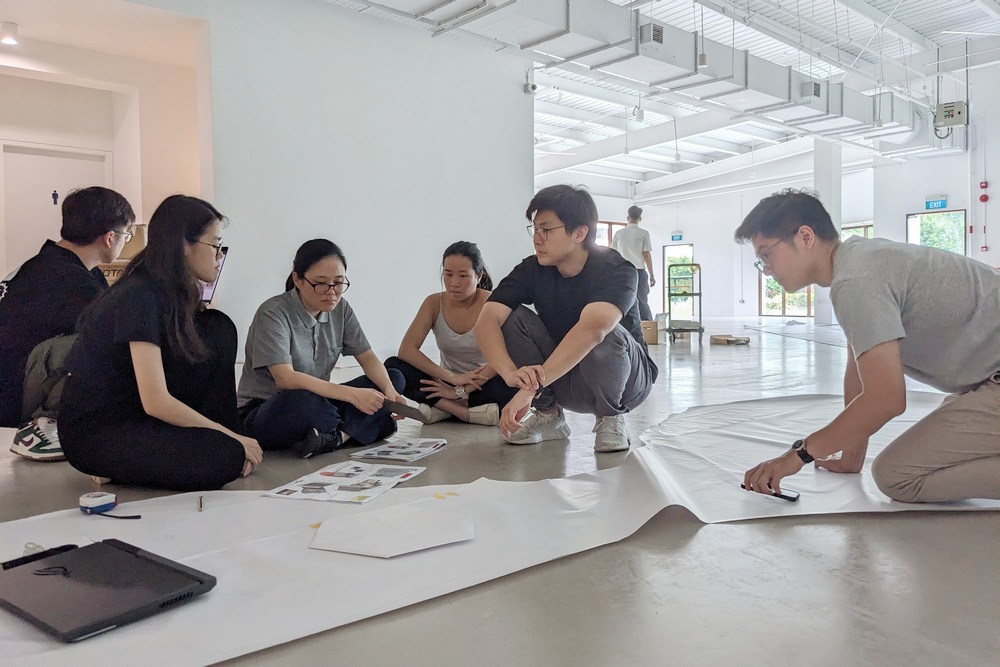 Tzu Chi assistant content lead, Tey Inn Ping (third from left) is seen here in discussion with TMMW team before putting up the content for the gallery. (Photo by Tang Zou Cie)
Tzu Chi assistant content lead, Tey Inn Ping (third from left) is seen here in discussion with TMMW team before putting up the content for the gallery. (Photo by Tang Zou Cie)
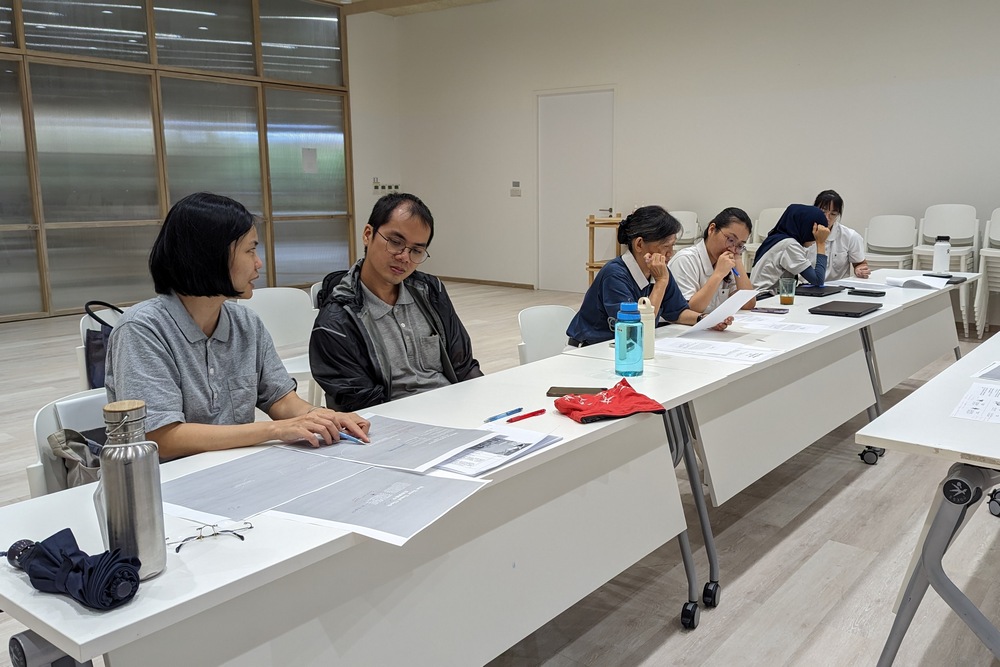 The Tzu Chi team did several rounds of proofreading before finalising the content. (Photo by Tey Inn Ping)
The Tzu Chi team did several rounds of proofreading before finalising the content. (Photo by Tey Inn Ping)
A Special Gallery
The process of conceptualising and designing a gallery was undoubtedly not an easy one. But with the different stakeholders coming together for a common cause, the multitude of challenges that once stood in the way was slowly overcome, one at a time.
Looking ahead, the Glow On Gallery aims to cement a special place in the hearts of all Singaporeans, particularly the younger generation. Eventually, the gallery hopes to build up strong community ties, passing on valuable knowledge of how each individual can partake in sustainability efforts.
Perhaps Ms Susan Tan best summed up the targets. Relating to the gallery's firefly concept, she said: “We hope that after visiting, the public can understand that every individual effort matters. Any small action taken to save the environment is akin to a firefly shining brightly alone. And when everyone comes together, the Earth will continue to light up.”

